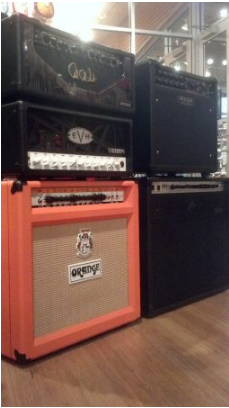Products Category
- FM Transmitter
- 0-50w 50w-1000w 2kw-10kw 10kw+
- TV Transmitter
- 0-50w 50-1kw 2kw-10kw
- FM Antenna
- TV Antenna
- Antenna Accessory
- Cable Connector Power Splitter Dummy Load
- RF Transistor
- Power Supply
- Audio Equipments
- DTV Front End Equipment
- Link System
- STL system Microwave Link system
- FM Radio
- Power Meter
- Other Products
- Special for Coronavirus
Products Tags
Fmuser Sites
- es.fmuser.net
- it.fmuser.net
- fr.fmuser.net
- de.fmuser.net
- af.fmuser.net ->Afrikaans
- sq.fmuser.net ->Albanian
- ar.fmuser.net ->Arabic
- hy.fmuser.net ->Armenian
- az.fmuser.net ->Azerbaijani
- eu.fmuser.net ->Basque
- be.fmuser.net ->Belarusian
- bg.fmuser.net ->Bulgarian
- ca.fmuser.net ->Catalan
- zh-CN.fmuser.net ->Chinese (Simplified)
- zh-TW.fmuser.net ->Chinese (Traditional)
- hr.fmuser.net ->Croatian
- cs.fmuser.net ->Czech
- da.fmuser.net ->Danish
- nl.fmuser.net ->Dutch
- et.fmuser.net ->Estonian
- tl.fmuser.net ->Filipino
- fi.fmuser.net ->Finnish
- fr.fmuser.net ->French
- gl.fmuser.net ->Galician
- ka.fmuser.net ->Georgian
- de.fmuser.net ->German
- el.fmuser.net ->Greek
- ht.fmuser.net ->Haitian Creole
- iw.fmuser.net ->Hebrew
- hi.fmuser.net ->Hindi
- hu.fmuser.net ->Hungarian
- is.fmuser.net ->Icelandic
- id.fmuser.net ->Indonesian
- ga.fmuser.net ->Irish
- it.fmuser.net ->Italian
- ja.fmuser.net ->Japanese
- ko.fmuser.net ->Korean
- lv.fmuser.net ->Latvian
- lt.fmuser.net ->Lithuanian
- mk.fmuser.net ->Macedonian
- ms.fmuser.net ->Malay
- mt.fmuser.net ->Maltese
- no.fmuser.net ->Norwegian
- fa.fmuser.net ->Persian
- pl.fmuser.net ->Polish
- pt.fmuser.net ->Portuguese
- ro.fmuser.net ->Romanian
- ru.fmuser.net ->Russian
- sr.fmuser.net ->Serbian
- sk.fmuser.net ->Slovak
- sl.fmuser.net ->Slovenian
- es.fmuser.net ->Spanish
- sw.fmuser.net ->Swahili
- sv.fmuser.net ->Swedish
- th.fmuser.net ->Thai
- tr.fmuser.net ->Turkish
- uk.fmuser.net ->Ukrainian
- ur.fmuser.net ->Urdu
- vi.fmuser.net ->Vietnamese
- cy.fmuser.net ->Welsh
- yi.fmuser.net ->Yiddish
How To Get the Most From Your Channel-Switching Amp — Part 1
Date:2020/3/5 17:36:25 Hits:

Channel-switching amplifiers offer guitarists a wealth of options. Since Mesa/Boogie introduced the Mark I in the ’70s, channel-switching amps have become an industry standard. The original Mark I was a single-channel amp with a switchable gain boost but that technology has since exploded to include amps with multiple channels, each with multiple voicing options, selectable power amp options, effects loops, and built-in effects. Deciding which amp is best for you and utilizing all of its potential can be daunting, especially when combining it with pedals, etc. This two-part series will hopefully shed some light on this multi-faceted topic.
Find the Sound
Even though channel-switching amps have a lot of options and variables, at the core of any amp is its basic, sonic character. To help find the amp that best suits your needs and playing style, consider it from the ground up. Evaluate the core construction and basic elements such as power section configuration and output wattage. Is it a derivative of another, already-existing amp? If it’s a combo, what is the speaker configuration? Examine and listen to the amp, decide where it sounds best and consider your needs from there. Let the amp be what it is, don’t try to bend it to what you think it should be. I’ll use three amps with totally different characteristics as examples.
Fender-y
First, let’s examine the Fender Super-Sonic 22 1×12. With a 22-watt power section using two 6V6 tubes through a single, 12-inch speaker it has many similarities to a Fender Deluxe. Listening to the first channel reveals a very Deluxe-like chime. Choosing “Fat Mode” on this channel alters the midrange, but the basic character stays the same. Channel 2 utilizes two, distinct-sounding, independently controllable gain stages that cascade into each other for massive distortion and a lot of variation, but the root tone of the amp is still present. In conclusion, if you want a Deluxe but need more high-gain options from the amp, the Super Sonic 22 is a perfect fit.
Rectify
At the opposite end of the spectrum is the Mesa/Boogie Dual Rectifier Roadster 100-Watt head. This amp has four, unique, totally-independent channels with three voicing options per channel plus a boatload of EQ and power section tweakability. Still, with all of the sonic variations available, the core sound is a Rectifier. Even in the cleanest setting, there is a certain, dipped-mid EQ and aggressive attack present in the sound. In other words, if you need lots of variety but want the basic tonal structure and high-volume capabilities of a Rectifier, this is your amp. If you love the sound of vintage, low-watt combo amps, keep shopping.
Rebel
The Egnater Rebel-30 MKII would be a good option for a variety of low-wattage amp tones. It has both EL84 and 6V6 power tubes, which are the foundation for most classic American and British combo amps. Either set of tubes can be utilized individually or they can be blended together for unique options. The Clean and Overdrive channels each have their own Variable Wattage Control, giving cranked-amp tones at manageable volume levels. Again, with all of these options available, the Rebel still has its own sonic fingerprint. Let your ear be your guide.
What Do You Need Most?
Once you’ve established the basic tone of the amp that you need, look at available options and form factor. Do you need portability, low or high wattage, more than two channels, an effects loop, or onboard effects? You may not be able to find an amp that has every option you want, so a prioritized shopping list is important. For example, if onboard reverb isn’t a big issue but you need an agressive, modern rock tone in a 2-channel combo, the PRS Archon 50/25 1×12″ would be a great choice. Sacrificing the least important attribute of an amp will ultimately give you the most satisfaction.
In part two, I’ll discuss how to use the various options of channel-switching amps to their most useful and musical end.
Leave a message
Message List
Comments Loading...





